This world abounds with life. Let us explore it together!
Don't wanna be here? Send us removal request.
Text
Hey kid, look at me.
I want you to T-pose. Turn your right thumb up and your left thumb doen and look at your right thumb. Move your arms up and down a bit until you feel a nerve running from your armpit to your palm. Now turn your right thumb down and your left thumb up, and look at your left thumb. Keep your chest facing forward and your shoulders back. Move your arms again until you feel that nerve again. Keep alternating between these two for a minute, or look at each thumb thirty times each.
Now sit down. Put your left hand firmly under your left buttock, palm down. Keep your shoulders back and put your right hand over the crown of your head, very gently pulling it to the right. Do this for thirty seconds, then do it again but with your right hand under your right buttock.
These are stretches for the nerves in your arms, and are very good for people who sit behind a computer a lot, or fibre artists, or you name it. Do them daily. They will hurt in the beginning, but keep doing them, even after the pain has gone, or it will return and you'll have to start all over.
44K notes
·
View notes
Text
An international study led by the University of Freiburg, published in Global Change Biology, has found that forests with many tree species can store significantly more carbon than those with only one species. Researchers used data from the world's oldest tropical tree diversity experiment and found that forests planted with five tree species had substantially higher aboveground carbon stocks and greater fluxes between the carbon stores than monocultures. The results highlight the benefits of mixed-species forests for forest restoration initiatives that aim at mitigating climate change through carbon sequestration.
[...]
Remarkably, the positive tree diversity effect on aboveground carbon stocks strengthened over time, despite repeated climatic extreme events such as a severe El Niño-driven drought and a hurricane that hit the experiment. "This is important, because in the face of climate change, the long-term carbon balance of forests will depend largely on their stability to disturbances. Diverse forests exhibit greater ecological stability and the risk that the stored carbon is released back to the atmosphere is lower than in monocultures," said Dr. Florian Schnabel, first author of the study, forest scientist at the University of Freiburg's Faculty of Environment and Natural Resources, and head of the Sardinilla experiment.
25 February 2025
352 notes
·
View notes
Text
Round 3 - Actinopterygii - Siluriformes




(Sources - 1, 2, 3, 4)
Order: Siluriformes
Common Name: “catfish”
Families: 41 - Diplomystidae (“velvet catfishes”), Cetopsidae (“whale catfishes”), Nematogenyiidae (“Mountain Catfish”), Trichomycteridae (“pencil catfishes”), Callichthyidae (“armored catfishes”), Loricariidae (“suckermouth catfishes”/“plecos”), Scoloplacidae (“spiny dwarf catfishes”), Astroblepidae (“climbing catfishes”), Chacidae (“squarehead catfishes”), Plotosidae (“eeltail catfishes”), Ritidae (“velvet catfishes”), Ailiidae (ailiid catfishes), Horabagridae (“imperial catfishes”), Bagridae (“naked catfishes”), Akysidae (“stream catfishes”), Amblycipitidae (“torrent catfishes”), Sisoridae (sisorid catfishes), Pangasiidae (“shark-catfishes”), Siluridae (silurid catfishes), Kryptoglanidae (“Indian Cave Catfish”), Aspredinidae (“banjo catfishes”), Auchenipteridae (“driftwood catfishes”), Doradidae (“thorny catfishes”), Heptapteridae (“three-barbeled catfishes”), Phreatobiidae (“cistern catfishes”), Pimelodidae (“long-whiskered catfishes”), Pseudopimelodidae (“bumblebee catfishes”), Clariidae (“airbreathing catfish”), Heteropneustidae (“airsac catfishes”), Ariidae (“sea catfishes”), Anchariidae (“Malagasy catfishes”), Austroglanididae (“rock-catfishes”), Cranoglanididae (“armorhead catfishes”), Ictaluridae (“North American freshwater catfishes”), Lacantuniidae (“Chiapas Catfish”), Amphiliidae (“loach catfishes”), Malapteruridae (“electric catfishes”), Mochokidae (“squeakers”/“upside-down catfish”), Auchenoglanididae (“flatnose catfishes”), Claroteidae (claroteid catfishes), and Schilbeidae (“schilbeid catfishes”)
1 species without family: Conorhynchos conirostris
Anatomy: scale-less, either with armor plates or “naked”; most have prominent barbels; heavy, bony head; reduced swim bladder; most have a flattened head; unable to protrude their mouths; many larger species have chemoreceptors across their entire body; generally small, sometimes nonexistent eyes; defensive spines on the leading rays of their dorsal and pectoral fins, which are venomous in many species; use sounds to communicate
Diet: diverse array of diets between species, including large to small animals, detritus, and blood; most are bottom feeders
Habitat/Range: inland or coastal waters of every continent except Antarctica; more than half of all catfish species live in the Americas.
Evolved in: Late Cretaceous

Propaganda under the cut:
Siluriformes are the vertebrate order with the largest number of venomous species. Most species are not dangerous to humans, but members of the family Plotosidae and of the genus Heteropneustes have a powerful venom that may hospitalize humans who receive a sting. The Striped Eel Catfish (Plotosus lineatus) has a sting which can cause mild to severe reactions in humans, including death, though no human deaths have been recorded as a result of a Striped Eel Catfish sting.
Members of the Malapteruridae family lack the spines of other catfish, instead opting for the ability to generate electricity in defense. Some species can deliver a shock of up to 350 volts from their electric organs. Electric catfish are found in tropical Africa and the Nile River, where they were well-known by Ancient Egyptians. The Early Dynastic King Narmer (meaning “painful/raging/angry catfish”) was named after the animal, sometimes with the abbreviation of just a catfish symbol.
Catfish have one of the largest ranges in size within a single Actinopterygiian order. Many catfish are 12 cm (4.7 in) or less, but some reach truly massive sizes. Record holders include the Wels Catfish (Silurus glanis), the Mekong Giant Catfish (Pangasianodon gigas) (image 1), and the Piraíba (Brachyplatystoma filamentosum), which can all reach over 2 m (6.6 ft) long, with the Piraíba getting up to 3.6 metres (12 ft) long and weighing 200 kilograms (440 lb). Myths exist of some of these giant catfishes being man-eaters, though verifiable evidence of this has yet to be produced.
The Mekong Giant Catfish is critically endangered due to overfishing, as well as loss of water quality due to development and dams. Fishing for wild Mekong Giant Catfish is illegal in the wild in Thailand, Laos, and Cambodia, but the bans appear to be ineffective and the fish continue to be caught in all three countries. Millions of tons of the fish are harvested in Cambodia every year, with even spawning fish being overharvested. Commercial international trade of wild-caught specimens is banned. Thailand is the only country to allow fishing for private stocks of Mekong Giant Catfish, and breeding for the aquarium trade.
In the Southern United States, catfish species may be known by a variety of slang names, such as "mud cat", "polliwogs", or "chuckleheads". These nicknames are not standardized, so one area may call a Bullhead Catfish (genus Ameiurus) by the nickname "chucklehead", while in another state or region, “chucklehead” refers to the Blue Catfish (Ictalurus furcatus).
The Walking Catfish (Clarias batrachus) is named for its ability to "walk" and wiggle across dry land, which it does to find food and disperse to better environments. Walking Catfish normally live in slow-moving and often stagnant water in ponds, swamps, streams, and rivers, as well as in flooded rice paddies or temporary pools that may dry up. When this happens, the Walking Catfish simply “walks” to a new aquatic environment.
The Candiru (Vandellia cirrhosa) is a parasitic freshwater catfish with a reputation for swimming up the urethra of bathing humans… however this is most likely a myth. Historical stories of the Candiru entering human orifices seem to have arisen from the trend of European explorers, doctors, and missionaries regularly using exaggerated accounts of native people to advance their economic and social status through fantastical writings. In reality, the tiny catfish slips into the gills of larger fish and latches onto the fish’s gill chamber, drinking the host’s blood. Once it is full, it releases its bite and swims away. In most cases, the host fish do not seem to be badly wounded by the tiny vampire.
Catfish are easy to farm in warm climates, leading to inexpensive and safe food at local grocers. About 60% of U.S. farm-raised catfish are grown within a 65-mile (100-km) radius of Belzoni, Mississippi. Channel Catfish (Ictalurus punctatus) support a $450 million/yr aquaculture industry. Catfish raised in inland tanks or channels are usually considered safe for the environment, since their waste and disease can be contained and not spread to the wild.
In 2003, The United States Congress passed a law preventing imported catfish from being labeled as catfish, saying that it would put pressure on the U.S. catfish industry. Thus, the Vietnamese shark-catfish Pangasius bocourti is called Basa, “Basa Fish”, or “Swai”.
In the mythology of the Japanese Shinto religion, earthquakes are caused by a giant underground catfish called Namazu. The god Takemikazuchi restrains the catfish underneath a stone. When the Kashima-god lets his guard fall, Namazu thrashes about, causing violent earthquakes. After the 1855 Edo earthquake Namazu-e were printed giving more popularity to the catfish kami. In one catfish print the divine white horse of Amaterasu is depicted knocking down the earthquake-causing catfish.
Catfish are quite popular in the home aquarium trade, and are often sold as bottom feeders and algae eaters. Most popular are species of the genus Corydoras: small, schooling catfish beloved for their small size and peaceful nature. Species of the family Loricariidae (image 4) are often called “plecos”, due to the popularity of the Suckermouth Catfish (Hypostomus plecostomus). They are often lauded as “algae eaters” and “tank cleaners”, but the diet of pleco species vary, some eating more meat, invertebrates, or wood, and they contribute more waste to the tank than algae they ingest. Some species of pleco (such as the eponymous H. plecostomus) get to be quite large, and when they outgrow their tanks may end up dumped into bodies of water outside of their native habitat, where they can become invasive species. It is important to research the full life history of any fish you intend to keep, and not keep them for a single “task”.
Remember my immortal bumblebee catfish? Yeah, he’s still alive. I also have a school of Glass Catfish (Kryptopterus vitreolus) (image 3)!
48 notes
·
View notes
Text
if you're in the throes of cosmic despair i cannot recommend museums enough. art or science or history it doesn't matter. oh we're all connected, all of us and everything, throughout all time and space, and no one, no one, no one is alone? awesome. that's what i thought i just wanted to make sure.
32K notes
·
View notes
Text
i've been reading a lot of books about urban naturalism recently, and the one big thing they all talk about is how you HAVE to stop seeing nature as something that happens somewhere else. nature is not just charismatic megafauna and state parks and mountain ranges. nature is that abandoned lot that's growing native milkweed in it. nature is the murder of crows that lives in your block. nature is the moss growing on your roof and the dandelions growing in the sidewalk cracks and the song birds at your neighbor's birdfeeder. and you should care about it! you should notice it! that's YOUR nature!
50K notes
·
View notes
Text
Puppet Pals That Save Birds
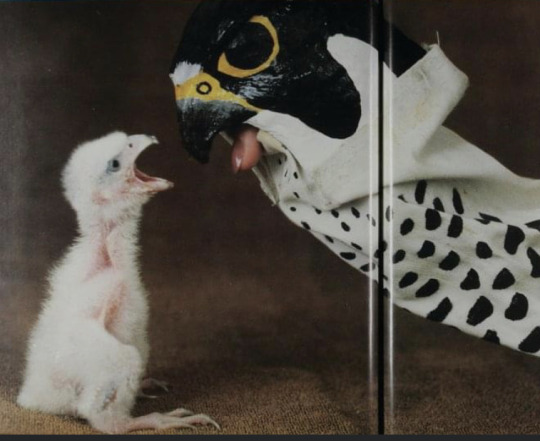
Prepare for bird puppet spamming! These puppets are used in rehabilitation and captive breeding programs to prevent human imprinting in young birds.
San Diego Zoo & Safari park’s well known California Condor puppet that aids in the California Condor Recovery Program.
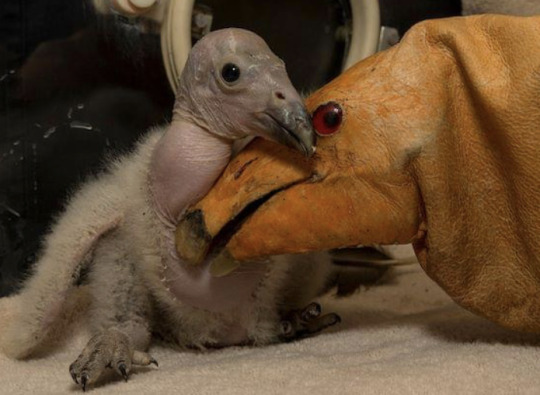
African Raptor’s Centre’s hyper realistic Bearded Vulture puppet used for propagation.
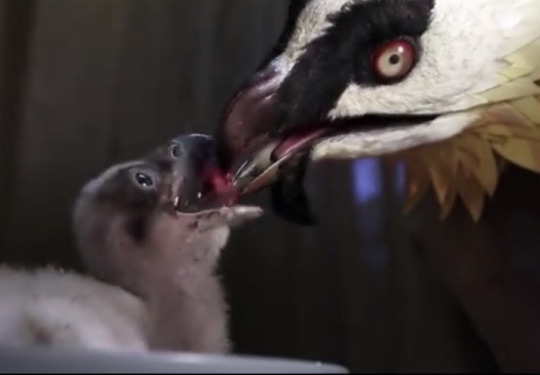
Saint Louis Zoo’s King Vulture puppet used for captive rearing of a King vulture chick.
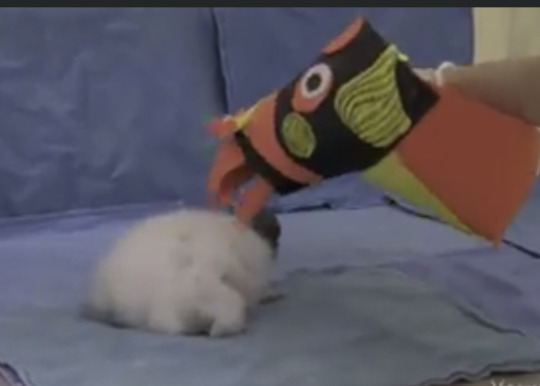
Denver Zoo’s vulture puppet used for captive rearing of a Cinereous vulture chick. “Mmmmmmmmmm…” Sorry, just a Dark Crystal reference..
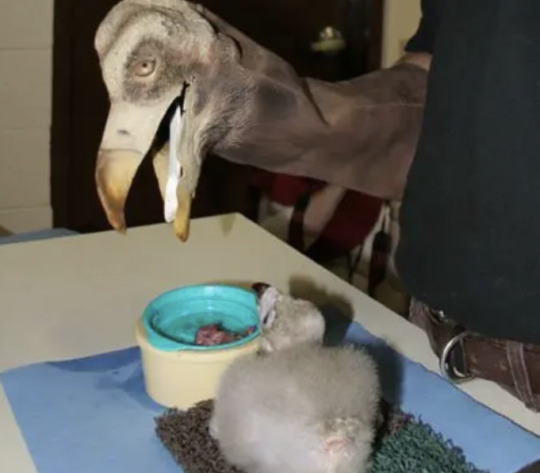
Liberty’s Owl, Raptor & Reptile Centre’s Falcon & Turkey Vulture puppets used for captive rearing.
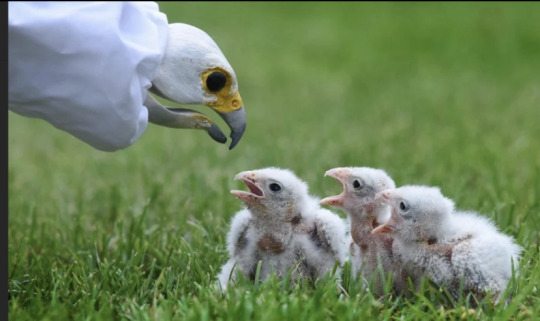
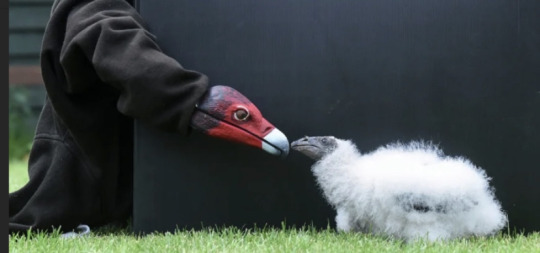
Raptor head puppet used at Beijing’s Raptor Rescue Center for rehabilitation. *Extends Xenomorph baby feeding tongue.*
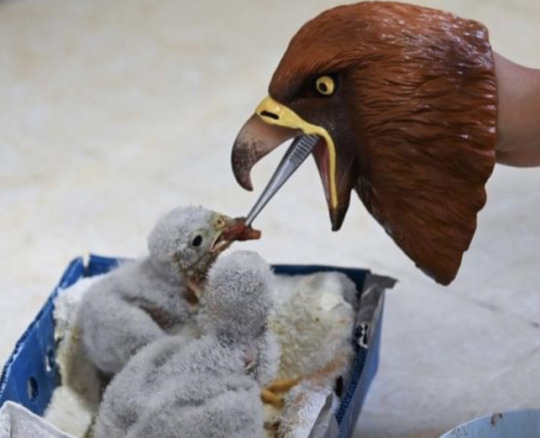
A childhood favorite! A sock puppet! Used at the Jersey Zoo for captive rearing Javan Green Magpies. (Cue Lamb Chop’s song!)
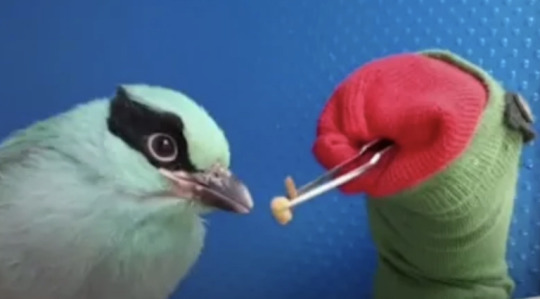
Last but not least, Philippine Eagle Foundation’s hyper realistic Philippine Eagle puppet used for propagation. This amazing puppet was made by Nambroth who makes spectacular bird related fursuit/cosplay pieces.
9K notes
·
View notes
Note
whats your favorite protist
Volvox
246 notes
·
View notes
Text
A new report from Yale found that the majority of registered voters in the United States:
•support climate-friendly policies
•would prefer to vote for a candidate who will take action on climate change
•think that developing clean energy should be a "high" or "very high" priority for the president and Congress
•support policies that support climate justice goals (this one specifically was a "large majority")
No matter how much they try to pretend otherwise, the current administration does not represent how the majority of Americans feel about issues related to climate change. Don't let them convince you that there's no reason to fight because you're the only one who cares.


253 notes
·
View notes
Text

Click through to see story links
https://www.exteriores.gob.es/en/Comunicacion/NotasPrensa/Paginas/2025_NOTAS_P/Espana-ratifica-el-Tratado-Global-de-los-Oceanos.aspx?ref=fixthenews.com
21 notes
·
View notes
Text
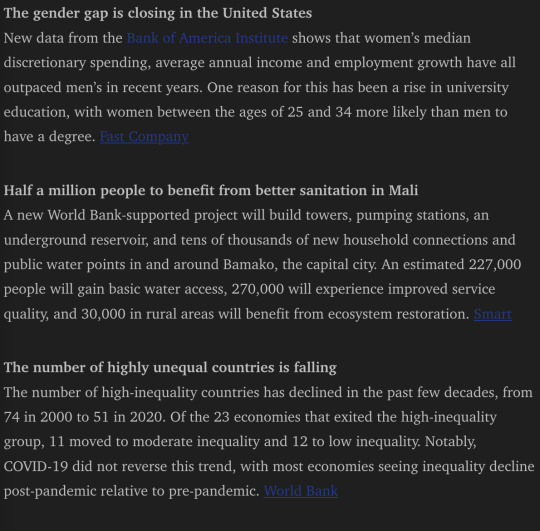
Click through to see story links
https://www.fastcompany.com/91269075/womens-wages-growing-faster-than-mens-gender-gap-economy-bank-of-america-institute?ref=fixthenews.com
29 notes
·
View notes
Text

BIG thing i get teased about over the years (in playful ways, it is fine buckaroos, but a light tease none the less) is the DIRECTNESS of my titles. many who stumble upon my books will immediately comment 'the title is so long it just says what happens'. here are some of my thoughts on that...
as with a lot of things in the tingleverse, my unusual artistic choices end up being a sort of TROJAN HORSE, called unserious and mocked by many, but hopefully over the years revealing something to buckaroos who are not tied to the separation of ‘low brow’ or ‘high brow’ art
i feel understood by most, but for some who JUST NOW encounter the tingleverse there is an automatic apprehension, from outright to subliminal. things like scoffing ’im not going to try and find meaning in a chuck tingle book’ (real quote) or 'skeptical of the horror, ive seen his OTHER books'
i have written a LOT about how much of this, whether buds know it or not, is not just about the dinosaurs and the living objects. it is about a culture that is built to see queerness and neurodivergence and (drumroll) SEXUALITY as fundamentally unworthy of ‘real’ artistic merit. this trot runs deep
theres SOMETHING ELSE i dont talk on much however, which is directness of my writing style, both in titles and on page. why i do it is this: AS AN ARTIST it is never my intention to impress you. my books are not the 'ME show' theyre the 'US show’ so i simply want my sentences to express what happens
i wont dance circles around you, leading you through the story saying LOOK AT ME LOOK HOW GOOD I AM IM SO COOL. i want to walk BESIDE you. of course, writing to impress is also great and valid art too, just not MY preference. this is ARTISTIC choice, but i want to talk for a moment on politics of it
i tend to see buckaroos holding a sort of STRICT interpretation of what makes ‘good’ art. it is a training that has been pounded into their heads declaring ‘real art cannot just come out and say what it means.' a good example would be if someone was being critical by just saying 'its heavy handed'
the thing is, there is a huge difference between saying ‘it was blunt.’ and ‘it was TOO BLUNT for what it was trying to accomplish.’ TIME AND TIME AGAIN however, you will see folks simply deciding ‘this art just said what it meant on the surface’ and leaving it there, as if that is INHERENTLY WRONG.
and the question i am forced to ask myself is ‘WHY is this wrong?’ in the vast, infinite pantheon of WHAT ART CAN BE why are we so obsessed with hiding ourselves? obscuring our thoughts? removing our politics? there is certainly a time for subtly, but it seems there is NEVER a time for being blunt
some say this is because arts more DIFFICULT to craft when it is subliminal, but folks do not REACT that way. art that is both direct AND subliminal and layered will STILL get torn down for leaving things on the surface, even when technically speaking it is probably most impressive to juggle both
there is plenty for you to research on this regarding the CIA secretly funding abstract expressionist art during the cold war. it is still HOTLY DEBATED, but i will mention it here for anyone reading my thread who is interested in a deep dive. HERE, however, i will talk about it on a personal level
i think that culturally we are CONSTANTLY told to not take up space, especially in marginalized groups. there is decades and decades of programming telling us ‘you can express yourself, but in a CIVILIZED WAY, not too loud, not too direct. CERTAINLY not too political.' i flatly reject this
of all the places to do what you want and say what you want to say, ART IS THE PERFECT ARENA. your writing, your songs, your music can absolutely be as subtle as you want, but especially during times like this, dont let anyone tell you that youre too dang loud. lets trot buckaroos.
and since i spent all morning writing this is am going to leave a link for my new book LUCK DAY, which is LOUD AS HECK. now is a time to make art, and it is also a time to support the artists you love. give a preorder if you can. LOVE IS REAL
2K notes
·
View notes
Text
We have already averted truly apocalyptic levels of global warming.
Yes, read that again. Let it sink in. This is what the science now says. We have already averted truly apocalyptic global warming.
To quote David Wallace-Wells, author of The Uninhabitable Earth, from his huge feature in the New York Times:
"Thanks to astonishing declines in the price of renewables, a truly global political mobilization, a clearer picture of the energy future and serious policy focus from world leaders, we have cut expected warming almost in half in just five years... The window of possible climate futures is narrowing, and as a result, we are getting a clearer sense of what’s to come: a new world, full of disruption but also billions of people, well past climate normal and yet mercifully short of true climate apocalypse." (New York Times, October 22, 2022. Unpaywalled here. Emphasis mine. And yes, this vision of the future is backed up by the current science on the issue, as he explains at length in the article.)
So we've already averted truly apocalyptic warming, and we've already cut expected warming IN HALF in just the past five years.
The pace of technology, of innovation, of prices, of feasibility, of discovery, of organizing, of grassroots movements, of movements in other countries around the world, have all picked up the pace so fast in the last five years.
Renewable technology and capacity are both increasing at an exponential rate. It's all S-curves, ones that look like this:

-via The Economist, June 20, 2024.
How much more will we manage in another five years? Another ten? Another twenty?
I know the US is about to fucking suck about the environment for the next four years. But the momentum of renewable energy is far too much to stop - both in the US (x) and around the world.
(Huge shoutouts to India, China, and Brazil for massive gains for the environment in renewables, and Brazil for massive progress against Amazon deforestation.)
We're going to get there.
Say it with me. We're going to get there.
19K notes
·
View notes
Text
I wish we had every single game on DS
Not 3DS, just DS. Guys please stop tagging this as 3DS


















19K notes
·
View notes
Text
I mean fuck, I like gills, I like slugs, I like gettin' chummy, I like flippers, I like the muck, I like squid inking and tsunamis and sea creatures, I like doin' sea creature shit, swordfish , probably would

20K notes
·
View notes
Text
there is no soul of an artist that distinguishes them from some 'non-artist' category of person that could simply never comprehend what it is like. anyone can make art. you should know this by now. from ratatouille
31K notes
·
View notes